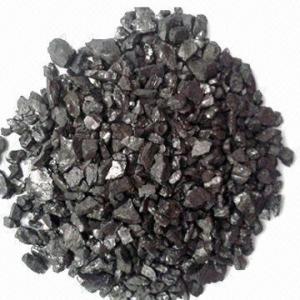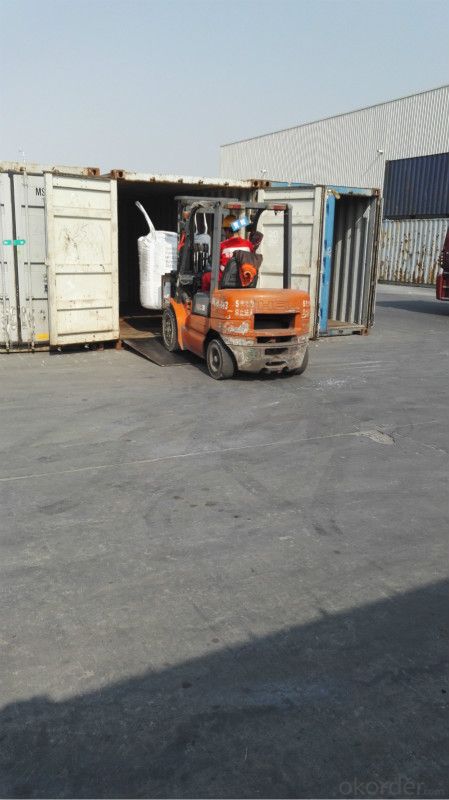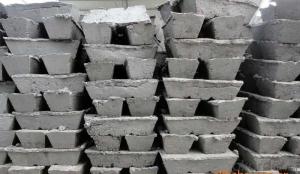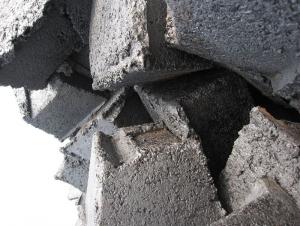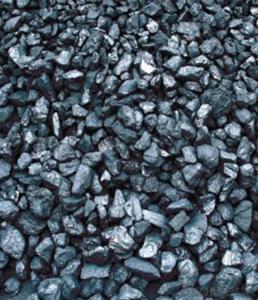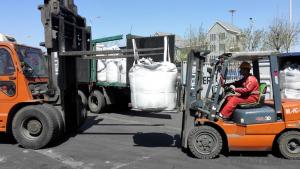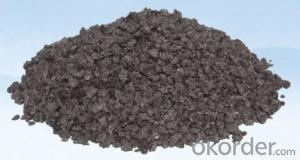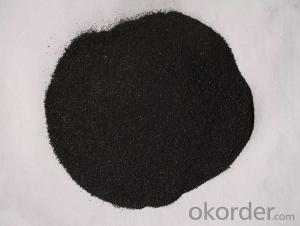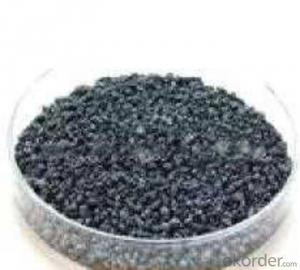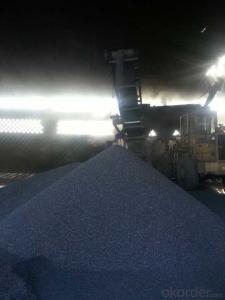FC85 Calcined Anthracite Coal as carbon additive in steel industry
- Loading Port:
- Tianjin
- Payment Terms:
- TT or LC
- Min Order Qty:
- 40 m.t.
- Supply Capability:
- 9600 m.t./month
OKorder Service Pledge
OKorder Financial Service
You Might Also Like
Specification
Introduction
Carbon Additive/Calcined Anthracite Coal may substitute massively refinery coke or graphite. Meanwhile its cost is much less than the refinery coke and graphite. Carbon Additive is mainly used in electric steel ovens, water filtering, rust removal in shipbuilding and production of carbon material.
Features
Carbon Additive also called Calcined anthracite Coal, Gas Calcined Anthracite Coal, Carbon Raiser, Recarburizer, injection coke, charging coke and etc. It is playing more and more important role in the industry.
The main raw material of our Carbon Additive is Ningxia unique high quality Taixi anthracite, with characteristic of low ash and low sulfur. it is playing more and more impoetant role in the steel industry. Carbon additive has two main usage, fuel and additive. When being used as the carbon additive of steel-smelting, and casting, the fixed carbon may achieve above 95%.
Best quality Taixi anthracite as raw materials through high temperature calcined at 1200-1250 ℃ for 24 hours by the DC electric calciner with results in eliminating the moisture and volatile matter from Anthracite efficiently, improving the density and the electric conductivity and strengthening the mechanical strength and anti-oxidation, It has good characteristics with low ash, low resistivity, low carbon and high density. It is the best material for high quality carbon products, it is used as carbon additive in steel industry or fuel.
Specifications
PARAMETER UNIT GUARANTEE VALUE | |||||
F.C.% | 95MIN | 94MIN | 93MIN | 92MIN | 90MIN |
ASH % | 4MAX | 5MAX | 6MAX | 7MAX | 8MAX |
V.M.% | 1 MAX | 1MAX | 1.5MAX | 1.5MAX | 1.5MAX |
SULFUR % | 0.5MAX | 0.5MAX | 0.5MAX | 0.5MAX | 0.5MAX |
MOISTURE % | 0.5MAX | 0.5MAX | 0.5MAX | 0.5MAX | 0.5MAX |
Pictures
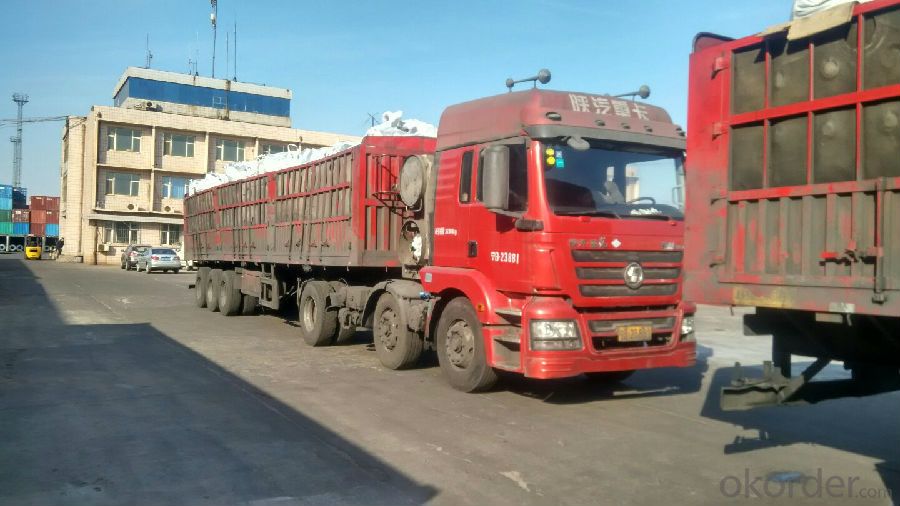

FAQ:
What is the packing?
In 25kg bag/ In jumbo bags without pallet/ Two jumbo bags with one pallet/ or as customers’ request
2. What is the production capacity?
10 thousand tons per month
3 What is payment term?
Irrevocable LC at sight/ 20% down payment by T/T and 80% against BL copy byT/T/ or to be discussed
4 What is the service?
We will send sample to the third party(CIQ, CCIC, SGS,BV or to be discussed) for checking, and present the test certificate and loading repot of shipment.
- Q: How does carbon impact the availability of natural resources?
- Carbon impacts the availability of natural resources by contributing to climate change. Excessive carbon emissions, primarily from burning fossil fuels, lead to global warming, which in turn affects the availability and distribution of resources such as water, food, and energy. Additionally, carbon pollution can cause ocean acidification, harming marine ecosystems and reducing fish populations. Therefore, controlling carbon emissions is crucial to ensure the sustainable availability of natural resources.
- Q: What are the impacts of carbon emissions on coral reefs?
- Carbon emissions have significant impacts on coral reefs. One of the most significant consequences is the process of ocean acidification, caused by the absorption of excess carbon dioxide (CO2) from the atmosphere. As the ocean becomes more acidic, coral reefs struggle to build and maintain their calcium carbonate skeletons, essential for their structure and survival. This can lead to reduced growth rates and weakened reefs, making them more susceptible to damage from storms, disease, and other stressors. Additionally, the rising ocean temperatures resulting from carbon emissions have led to widespread coral bleaching events. When corals experience prolonged exposure to high temperatures, they expel the symbiotic algae (zooxanthellae) living within their tissues, which provide them with essential nutrients and give them their vibrant colors. Without these algae, corals become pale or completely white, a phenomenon known as bleaching. If the stressors subside, corals can recover, but if the bleaching is severe or prolonged, it can lead to coral death and the subsequent degradation of the reef ecosystem. Furthermore, increased carbon emissions contribute to the intensification of storms and other extreme weather events, which pose a direct threat to coral reefs. Stronger storms can physically damage the reefs, breaking apart their fragile structures and reducing their resilience. The resulting sediment runoff from land, often exacerbated by storms, can smother corals and hinder their ability to feed and grow. The impacts of carbon emissions on coral reefs are not only detrimental to these diverse marine ecosystems but also to the millions of people who depend on them for food, income, and coastal protection. Coral reefs support a vast array of marine life, provide a source of livelihood for many communities through fishing and tourism, and act as natural barriers against storm surge and coastal erosion. The degradation of coral reefs due to carbon emissions threatens the livelihoods and well-being of these communities, as well as the overall health and biodiversity of our oceans. To mitigate these impacts, it is essential to reduce carbon emissions by transitioning to cleaner, renewable energy sources, promoting sustainable practices on land to reduce runoff and pollution, and implementing effective management and conservation measures to protect and restore coral reef ecosystems.
- Q: How does carbon monoxide affect air quality and human health?
- Carbon monoxide (CO) is a colorless, odorless gas that is produced from the incomplete combustion of fossil fuels, such as gasoline, coal, and wood. It is a major contributor to air pollution and has significant impacts on air quality and human health. In terms of air quality, carbon monoxide is a pollutant known as a criteria air pollutant, which means it is regulated by government agencies due to its harmful effects. When released into the atmosphere, CO reacts with other pollutants, such as nitrogen oxides and volatile organic compounds, to form ground-level ozone, which is a major component of smog. High levels of ground-level ozone can cause respiratory problems, particularly for individuals with pre-existing respiratory conditions such as asthma. Furthermore, carbon monoxide is a potent greenhouse gas that contributes to global warming and climate change. It traps heat in the atmosphere and prevents it from escaping into space, leading to rising temperatures and altered weather patterns. In terms of human health, carbon monoxide is highly toxic. When inhaled, it binds to hemoglobin in the blood, reducing its ability to carry oxygen to vital organs and tissues. This can lead to a range of health issues, from mild symptoms like headaches, dizziness, and fatigue, to more severe conditions like chest pain, confusion, and even death. Vulnerable populations such as children, the elderly, and individuals with pre-existing heart or lung conditions are particularly susceptible to the harmful effects of carbon monoxide. Exposure to high levels of carbon monoxide can occur in various settings, including indoor environments where combustion sources like gas stoves, heaters, and fireplaces are present, as well as in outdoor areas with heavy traffic or industrial emissions. To mitigate the impact of carbon monoxide on air quality and human health, regulatory measures such as emission standards for vehicles and industrial sources have been implemented. Additionally, public awareness campaigns and the use of carbon monoxide detectors in homes and workplaces are essential in detecting and preventing potential exposure to this harmful gas. In conclusion, carbon monoxide significantly affects air quality and human health. It contributes to air pollution, including the formation of ground-level ozone and greenhouse gas emissions, which have adverse effects on respiratory health, the environment, and climate change. Understanding the sources, effects, and implementing appropriate measures to reduce exposure to carbon monoxide is crucial for protecting both air quality and human well-being.
- Q: What are the effects of carbon emissions on the stability of estuaries?
- Carbon emissions have significant effects on the stability of estuaries. Estuaries are highly productive and diverse ecosystems that serve as a crucial habitat for numerous species, including fish, birds, and other wildlife. However, excessive carbon emissions, primarily in the form of carbon dioxide (CO2), contribute to climate change and ocean acidification, which in turn have detrimental effects on estuaries. One of the most prominent effects of carbon emissions on estuaries is the rise in sea levels. As global temperatures increase due to carbon emissions, glaciers and ice caps melt, leading to a rise in sea levels. Estuaries, being low-lying areas where rivers meet the sea, are particularly vulnerable to this sea-level rise. Higher water levels can result in increased flooding, erosion, and saltwater intrusion into freshwater systems within estuaries, impacting the overall stability of these ecosystems. Moreover, the increased concentration of CO2 in the atmosphere leads to ocean acidification. When CO2 dissolves in seawater, it reacts with water to form carbonic acid, which lowers the pH of the water. This acidification has detrimental effects on the marine life within estuaries, including shellfish, oysters, and other organisms with calcium carbonate shells. The acidity makes it more difficult for these organisms to build and maintain their shells, leading to reduced populations and biodiversity within estuaries. Additionally, climate change caused by carbon emissions alters the temperature and precipitation patterns in estuaries, affecting the balance of salinity and freshwater influx. Estuaries rely on a delicate balance of saltwater and freshwater to support their unique ecosystems. Changes in temperature and precipitation can disrupt this balance, leading to significant shifts in species composition and distribution. Some species may struggle to adapt to these changes, while invasive species may thrive, further altering the stability and integrity of estuarine ecosystems. Overall, the effects of carbon emissions on the stability of estuaries are profound and multifaceted. Rising sea levels, ocean acidification, and climate-induced changes in salinity and freshwater availability all contribute to the degradation of estuaries and the loss of biodiversity. It is crucial to reduce carbon emissions and mitigate climate change to protect and preserve these vital ecosystems for future generations.
- Q: How does carbon impact the prevalence of earthquakes?
- Carbon does not directly impact the prevalence of earthquakes. Earthquakes are primarily caused by the movement of tectonic plates and the release of built-up stress along fault lines. However, carbon emissions and climate change can indirectly affect the frequency and intensity of earthquakes by contributing to the melting of glaciers and polar ice caps, which in turn can lead to changes in the Earth's crust and the redistribution of its mass. These changes can potentially influence the occurrence of seismic activities.
- Q: How does carbon affect the migration patterns of birds?
- Carbon emissions and the resultant climate change have a significant impact on the migration patterns of birds. The increase in carbon dioxide levels in the atmosphere leads to global warming, which affects various environmental factors such as temperature, precipitation, and vegetation growth. These changes directly influence the availability of food, water, and suitable habitats for birds during their migratory journeys. One of the key ways carbon affects bird migration is by altering the timing and duration of seasonal events. For instance, warmer temperatures can cause plants to bloom earlier or delay their growth, disrupting the synchronized timing of flowering and the arrival of insects. This can have serious consequences for birds that rely on these resources for food during their migration. If birds arrive at their breeding grounds or stopover sites and find a lack of food, it can lead to decreased survival rates, reduced reproductive success, and overall population decline. Additionally, changes in precipitation patterns due to carbon emissions can affect the availability of water sources along migration routes. Birds rely on these water bodies for drinking and bathing, especially during long flights. If these water sources dry up or become scarce, it can force birds to alter their flight paths, search for alternative water sources, or even risk dehydration. Furthermore, carbon-induced changes in vegetation cover can impact the availability of suitable habitats for birds. As temperatures rise, some bird species may face challenges in finding suitable breeding or nesting sites. Forest-dwelling birds, for example, may experience habitat loss as forests are degraded or replaced by drier ecosystems. This can disrupt their migratory patterns and potentially lead to population declines or range shifts. Overall, the impact of carbon emissions on bird migration patterns is complex and multifaceted. As climate change continues to unfold, it is crucial to mitigate carbon emissions and implement conservation measures to ensure the survival and well-being of migratory bird populations. Protecting crucial stopover sites, promoting habitat restoration, and raising awareness about the consequences of carbon emissions can all contribute to preserving the intricate and vital phenomenon of bird migration.
- Q: What role does carbon play in photosynthesis?
- Carbon plays a crucial role in photosynthesis as it is the primary element used by plants to produce organic compounds. During photosynthesis, plants absorb carbon dioxide from the atmosphere and use it to synthesize glucose, a simple sugar that serves as a building block for more complex carbohydrates, such as starch and cellulose. This process occurs in the chloroplasts of plant cells, specifically in the stroma of the chloroplast, where the enzyme RuBisCO catalyzes the fixation of carbon dioxide into an organic molecule called PGA (phosphoglycerate). Through a series of reactions known as the Calvin cycle, PGA is converted into glucose, which can be stored for energy or used for growth and reproduction. In summary, carbon is essential for photosynthesis as it provides the raw material necessary for plants to produce their own food and sustain life.
- Q: What is the structure of graphite, another form of carbon?
- Graphite is a unique form of carbon that exhibits a distinct structure, different from other forms such as diamond or amorphous carbon. Its structure consists of layers of carbon atoms arranged in a hexagonal lattice. Each carbon atom forms covalent bonds with three neighboring carbon atoms, resulting in a two-dimensional sheet-like structure. Within each layer, the carbon atoms are bonded together through strong covalent bonds, forming a planar network. The carbon-carbon bonds in graphite are significantly stronger than typical single bonds, making the structure highly stable. The hexagonal lattice arrangement of carbon atoms creates a honeycomb-like pattern, giving graphite its characteristic appearance. The layers in graphite are held together by weak van der Waals forces, allowing them to slide past each other with ease. This property gives graphite its lubricating nature, as well as its ability to leave a mark on paper when used as a pencil lead. The arrangement of carbon atoms in graphite also leads to its excellent electrical conductivity. The delocalized electrons in the structure can move freely along the layers, allowing for the flow of electric current. This property makes graphite useful in various applications, including electrical components, electrodes, and as a lubricant in high-temperature environments. In summary, the structure of graphite consists of layers of carbon atoms arranged in a hexagonal lattice, bonded together by strong covalent bonds within each layer and held together by weak van der Waals forces between the layers. This unique structure gives graphite its distinct properties, such as its lubricating nature, electrical conductivity, and versatility in various industrial applications.
- Q: The main difference between steel and iron is the difference in carbon content
- The carbon content of 2% ~ 4.3% said that the iron carbon alloy cast iron. Iron is hard and brittle, but the pressure to wear. According to the existing steel carbon iron in different forms can be divided into white iron, gray iron and ductile iron. White cast iron with Fe3C carbon distribution, fracture is silver white, hard and brittle, not in mechanical processing, steel raw materials, it is also called the carbon graphite iron for steelmaking. The distribution of gray, gray fracture, easy cutting, easy casting, wear. If the carbon distribution is said to spheroidal graphite nodular cast iron, its mechanical properties and processing performance is close to steel special alloy elements added. In the cast iron can be special cast iron, such as adding Cr, the wear resistance can be greatly improved, with important applications in special conditions
- Q: What are the different types of carbon-based air pollutants?
- There are several types of carbon-based air pollutants, including carbon monoxide (CO), carbon dioxide (CO2), volatile organic compounds (VOCs), and black carbon (BC).
Send your message to us
FC85 Calcined Anthracite Coal as carbon additive in steel industry
- Loading Port:
- Tianjin
- Payment Terms:
- TT or LC
- Min Order Qty:
- 40 m.t.
- Supply Capability:
- 9600 m.t./month
OKorder Service Pledge
OKorder Financial Service
Similar products
Hot products
Hot Searches
Related keywords
